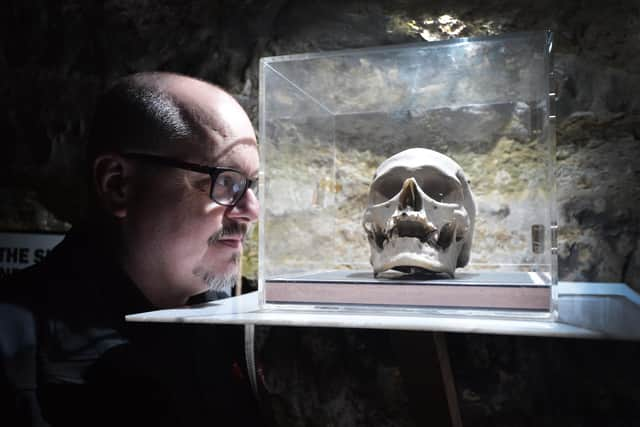Watch video: Spooky stories from Sussex museum that is the most haunted in the country
and live on Freeview channel 276
The atmospheric attraction is set in a cave at White Rock, on Hastings seafront. Among the many grisly exhibits is the real skull of French murderer Louis Lefevre.
Lefevre was one of a gang of armed robbers back in the earlier part of the 20th century, holding up small businesses in the rural parts of France.
Advertisement
Hide AdAdvertisement
Hide AdIn 1916, they stopped in a village near Tours. In the hotel bar Lefevre was taunted by an associate about his wife's affair with another man. Lefevre took a tiny pistol from his pocket and shot his tormentor, who died three days later.


Lefevre rushed upstairs and found his wife in bed with another gang member, he quickly took his gun and killed him too. He then shot his wife in the head.
He was arrested, tried and convicted of triple murder and rape, and was executed by guillotine on 16th April 1916.
His body was taken to the morgue at Tours where the coroner performed a cranial dissection in order to try and locate any abnormalities to Lefevre's brain which may have led to him undertaking his terrible crimes.
Advertisement
Hide AdAdvertisement
Hide AdAt the time, the science of neurology was being developed at New Scotland Yard, so Lefvre's head was taken by the Gendarmes and posted to London wrapped in paper and a cardboard box!
It was examined and photographed by forensic investigators, and a full report concluded that there was no evidence of an abnormality that could have caused Lefevre to commit these crimes.
In a bizarre twist to the story...A gruesome photograph showing the cranial incision found it's way to the French press, who published it with the headline 'Botched Execution', claiming that Lefevre had moved his head at the last minute, and the guillotine blade stuck his forehead. This was of course false.
The skull of Louis Lefevre can now be seen in The True Crime Museum's 'Death Chamber' where much paranormal activity has been reported around it. Two nurses from The Conquest Hospital Hastings visited the Museum, but left rapidly after receiving a message they felt came from Lefevre. The message requested invitation to their home.
Have you read? Sussex pub is most haunted in Britain